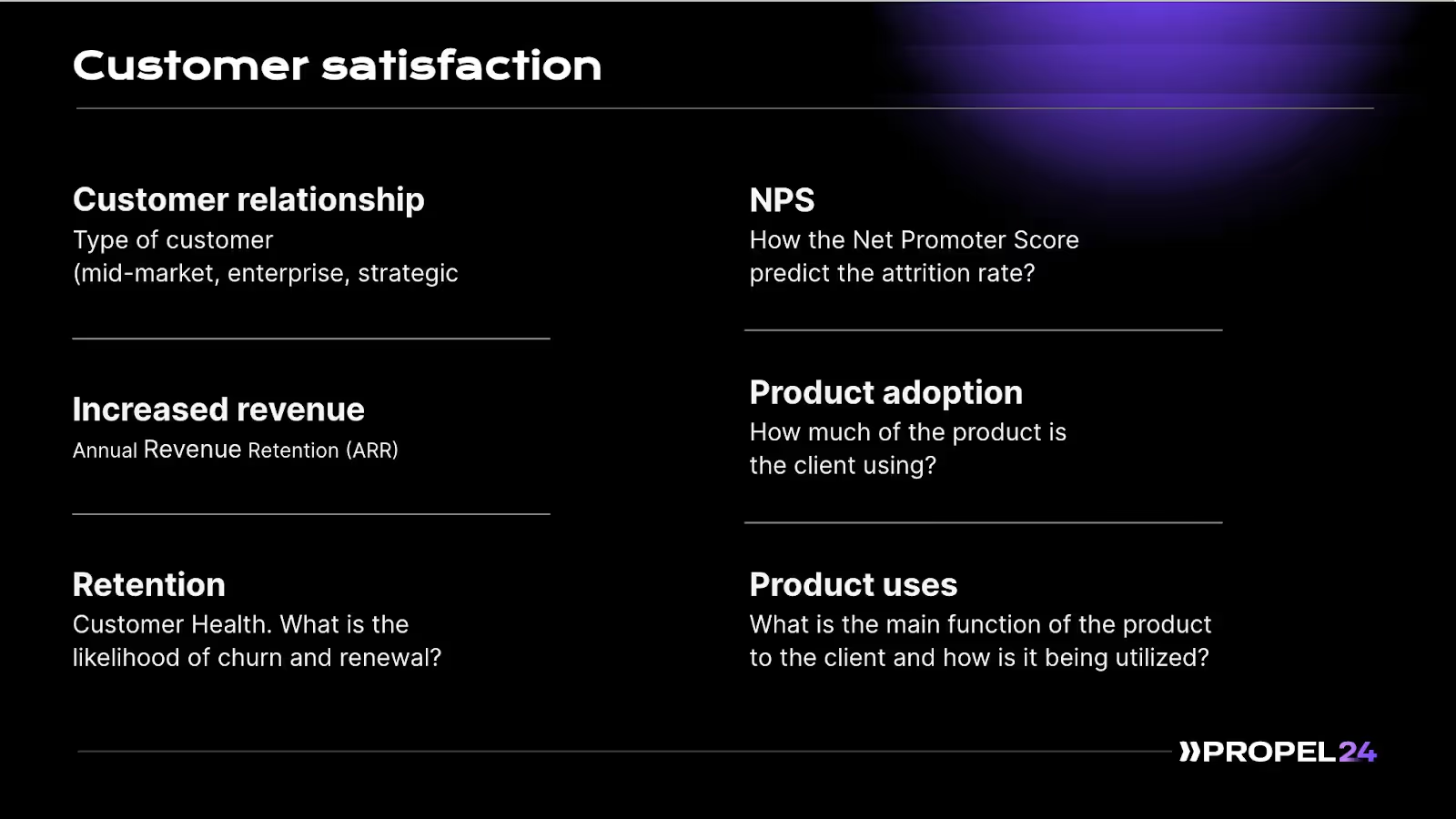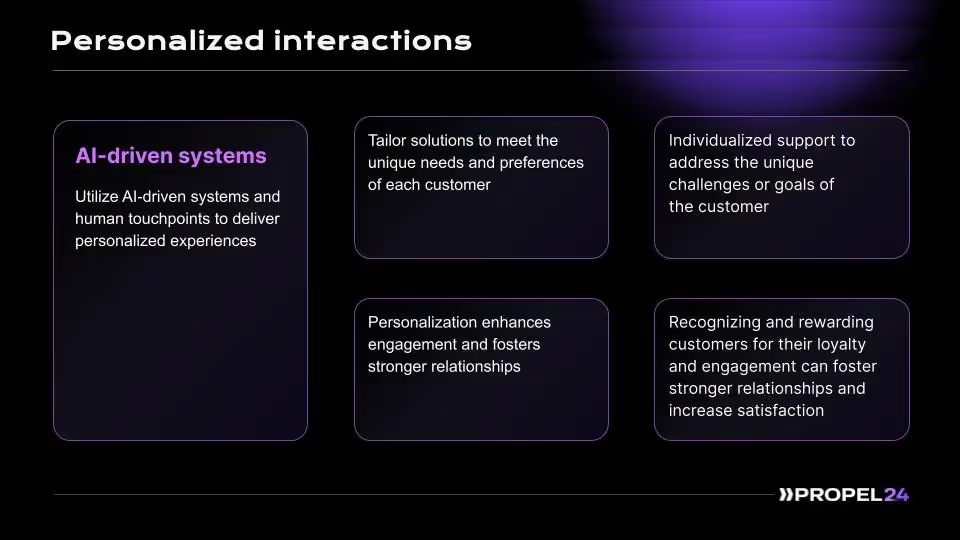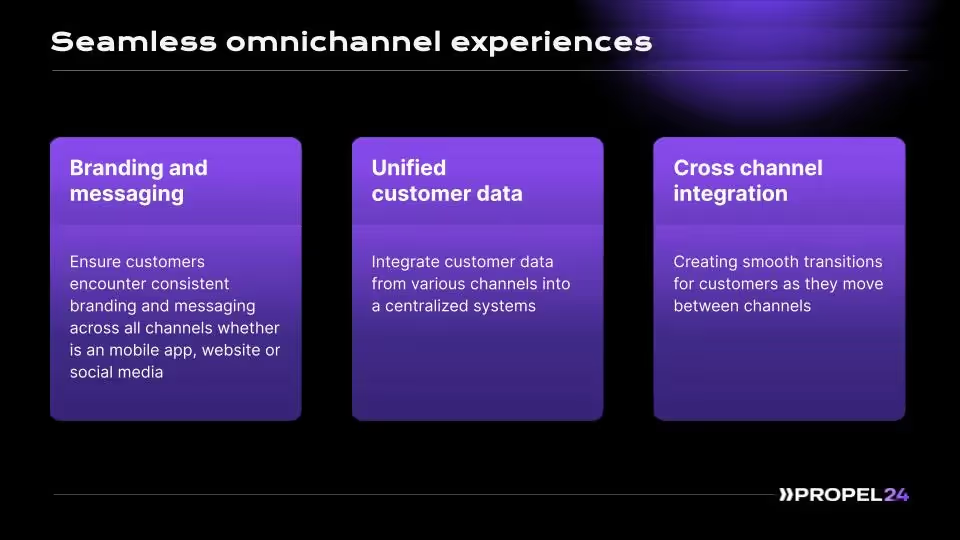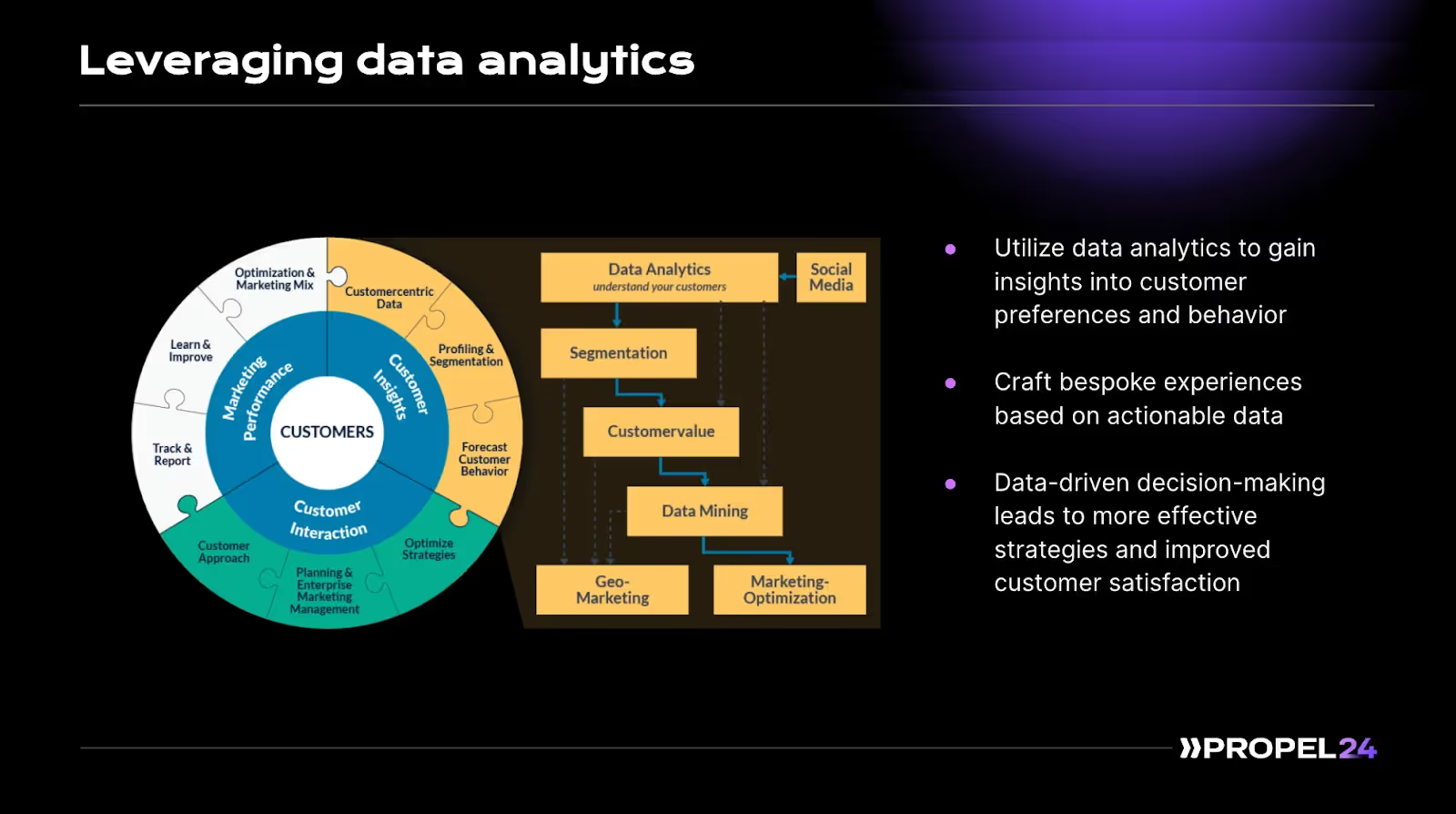Customer satisfaction is not just a vanity metric. It impacts the revenue, retention, and overall health of any business and is the lifeline of business operations. In 2024, understanding and prioritizing customer satisfaction will remain a critical focus for businesses striving to maintain their edge. Organizations need to foster and maintain robust relationships with clients, regardless of whether they’re dealing with mid-market enterprises or strategic accounts.
But how do you build strong customer relationships and ensure your customers are happy?
Terinee Pooler shares her secrets at Propel24.
Terinee is an accomplished Enterprise Customer Success Manager based in Atlanta, GA, with expertise in data management, analytics and strategic communications. With a proven track record at companies like Datadog and PatientPop, she excels in exceeding customer expectations and building loyal relationships. She has successfully managed enterprise-level clients, negotiated long-term contract renewals, and contributed to increased profitability and pipeline development.
In her session, she spoke about:
- The importance of customer success
- Personalized customer interactions
- Enabling seamless omni-channel experiences for customers
- Proactive communication and leveraging data
- The metrics to track customer satisfaction
Here’s a summary of the talk.
The importance of customer satisfaction

A satisfied customer is more likely to remain loyal, provide valuable feedback, and contribute to a stable revenue stream over time. When customers are satisfied, they tend to stick around longer, leading to higher annual revenue retention (ARR). This retention is a clear indicator of a business’s health and its ability to grow sustainably. Moreover, the likelihood of churn decreases significantly when customer satisfaction is high.
To manage customer satisfaction, you need to understand customer health scores and predict churn or renewal probabilities. Here are four simple strategies for enhancing customer satisfaction:
- Personalized customer interactions and engagement: Tailor interactions based on the customer's specific needs and preferences to enhance the customer experience and build stronger relationships.
- Proactive support and resources: Provide customers with the necessary training and resources to help them adopt your product better and maximize its use.
- Continuous improvement: Adopt a culture of continuous improvement based on customer feedback. This helps you plan your future product roadmap and refine your existing products or services. It also proves to the customer that their needs and opinions are heard.
- Aa customer-centric culture: Embed customer satisfaction into the core values of your organization and ensure that every team member is aligned towards the common goal of keeping the customer pleased.
Personalized interactions

Personalized interactions are crucial for deepening the relationship between you and your customers. Today, AI-driven systems can help you deliver highly customized customer experiences. These systems analyze metrics like NPS, retention, and product adoption, using AI to understand customer behavior and tailor solutions to their unique needs. This approach not only enhances engagement but also builds stronger, more meaningful relationships. By leveraging AI, you can provide individualized support that aligns with customers' specific goals, whether it's growth or expansion. Recognizing and acting on these touchpoints demonstrates your commitment to their success, fostering loyalty and ensuring long-term customer satisfaction. As you achieve higher NPS scores, you can celebrate and reward excellent performance, reinforcing a positive customer experience and maintaining strong, lasting relationships.
Seamless omni-channel experiences

For overall customer satisfaction, you need to provide customers need a seamless omni-channel experience. As you expand your services, it's essential that customers can access and utilize your services seamlessly across various platforms. A strong omni-channel presence enhances product usage and client loyalty. Ensuring consistent branding and messaging across all channels—be it mobile apps, websites, or social media—creates a cohesive customer journey.
Another vital factor to ensure delightful experiences is unifying customer data. Integrating data across different CRMs or platforms ensures smooth transitions and prevents customer frustration. Effective cross-channel integration allows customers to move effortlessly between channels, maintaining a consistent and positive experience. Managing data efficiently and ensuring it is interconnected, allows businesses to enhance customer satisfaction and provide a superior overall experience.
Proactive communication
Continuous and thoughtful outreach is key to maintaining and improving customer relationships. Customers need to be empowered to engage effortlessly across multiple touchpoints and channels, such as Slack, email, and in-app chats to maintain strong engagement. Consistency in the customer experience across all channels is also vital, as any discrepancies can negatively impact NPS scores and customer feedback.
Use omni-channel approaches, AI systems, and various messaging tools, to provide valuable insights and data to clients, reinforcing their support and trust. Tailoring communication strategies to individual customer preferences also enhances satisfaction, prevents overcommunication, and delivers a personalized, high-quality experience.
Leveraging data analytics

Utilizing AI capabilities and data analytics can help you gain deep insights into customer preferences, behaviors, and segmentation. These insights will come in handy while optimizing marketing strategies and improving overall customer value.
Data analytics provides actionable metrics that can identify potential issues affecting product adoption or usage, allowing you to proactively address them. For instance, if customers are not engaging with training materials or experiencing dormant periods of low usage, you can use these insights to tailor solutions that will improve their experience across the product. Data-driven decision-making enables you to develop more effective strategies for customer satisfaction, ensuring you meet their needs seamlessly. Remember to continually analyze and act on these data points to provide a more personalized and responsive service, ultimately enhancing the overall customer experience.
Metrics to track customer satisfaction
Tracking key metrics allows you to drive continuous improvement and deliver exceptional customer experiences. They are indispensable in driving customer loyalty and ensuring the long-term success of your business.
Here are four key metrics to track for customer satisfaction:
1. Customer Satisfaction Score (CSAT)
CSAT typically measures customer satisfaction on a scale from 1 to 5. Higher CSAT scores reflect a more positive commitment to customer satisfaction. For example, achieving an average score of 4.2 or higher would indicate a positive sentiment.
2. Churn rate
Reducing churn rate is top-of-mind for most businesses. Multi-channel support and proactive communication is one of the strategies that can retain clients and minimize churn.
3. Net Promoter Score (NPS)
NPS typically gauges customer loyalty on a scale from -100 to 100. A score of 60% or higher, with the majority of customers rating 9 or 10, signifies strong customer satisfaction. Addressing feedback from passive (7-8) and detractor (0-6) scores and implementing feedback-driven improvements can convert passives and detractors into promoters, enhancing overall NPS.
4. Time to resolution
Proactive communication and efficient ticket management are vital for reducing time to resolution. By tagging tickets and collaborating with customer support and solutions engineers, you can resolve inquiries swiftly and minimize response times.
In 2024, prioritizing customer satisfaction is more important than ever. Implementing these best practices and monitoring key metrics such as CSAT scores not only strengthens customer relationships but also drives sustainable growth and success for organizations. By putting customers first, we can create exceptional experiences that keep them satisfied and loyal for the long term.















